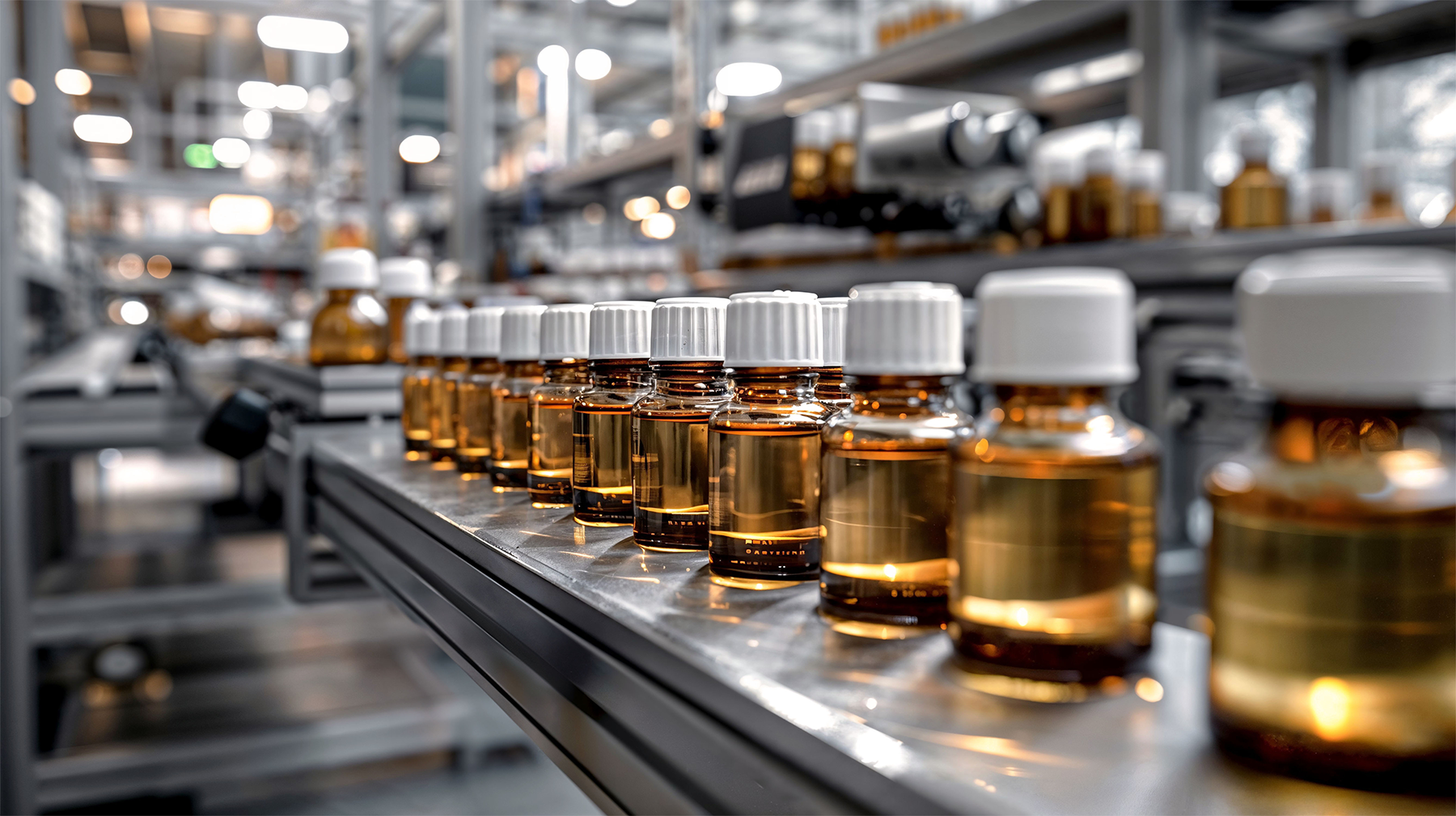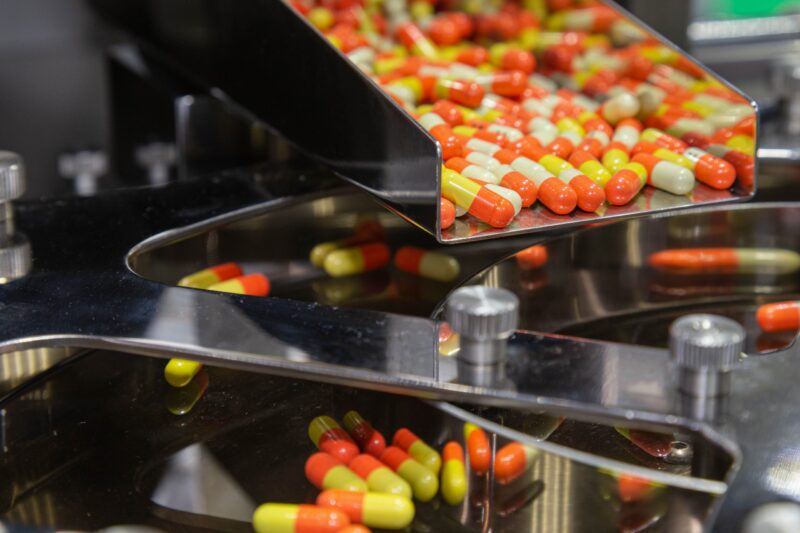Pharmaceutical manufacturing process explained
Pharmaceutical manufacturing is a highly regulated industry where every step must be carefully measured, logged, and executed. Today, we take a look at the pharmaceutical manufacturing process and see what it entails.

Henry Kivimaa

The pharmaceutical industry is one of the most lucrative, regulated, yet controversial industries there is. With the likes of Martin Shkreli and the Sackler family, there are many examples of how the industry can be incredibly unethical and corrupt. However, there’s also a lot of good. I guess most of us have reached for an Advil to ease the headache after a long and stressful day at work.
Today, we’ll look into how the sausage is made — more precisely, how pharmaceuticals are made. We explore pharmaceutical manufacturing processes, the different stages drugs go through before making it to the pharmacy, and the best ways to manage it all.
But first, let’s get up to speed with the terminology.
What is pharmaceutical manufacturing process?

Pharmaceutical manufacturing process is a series of steps used to produce medication for human and animal consumption. The process usually includes the following:
- Formulation — Designing the drug’s composition and determining the correct mix of active ingredients and excipients to achieve the desired therapeutic effect.
- Mixing and granulation — Combining raw materials to form a consistent mixture, often converting powders into granules to improve flow and compression properties.
- Drying — Removing moisture from the coarse material to ensure stability and prevent degradation.
- Compression and encapsulation — Pressing the dry granules into tablets or filling them into capsules to ensure uniform weight and dosage.
- Coating — Applying a protective layer to tablets or capsules to enhance stability, control release rates, and improve patient compliance.
- Quality control — Conducting rigorous testing at various stages of production to ensure each manufactured batch meets predefined quality standards for purity, potency, and safety.
- Packaging — Sealing the final product in appropriate containers, such as blister packs or bottles, to protect from contamination and ensure proper dosage administration.
- Labeling and distribution — Applying labels with essential information and distributing the packaged drugs to pharmacies, hospitals, and other healthcare providers.
This is a fairly generic list, and the drug product manufacturing processes can vary depending on the exact medication produced. For example, cough syrup clearly won’t need compression and coating. However, the list does cover the most common processes in pharmaceutical manufacturing.
We mentioned that the pharmaceutical industry is one of the most regulated, so let’s see how that is achieved.
Pharma production processes simplified
Katana Cloud Inventory Platform gives you a 360-view of your raw materials, operations, inventory, and sales. Book a demo to see how.
Pharmaceutical manufacturing process and regulations
When the safety of citizens is at risk, governments, in most cases, try to come up with different regulations to mitigate these risks. In the US, the Food and Drug Administration, or the FDA, establishes these regulations and ensures pharmaceutical production follows the set guidelines.
To ensure the safety of the pharmaceutical production process, the FDA has established current good manufacturing practices (CGMPs). CGMPs are rigorous standards that provide a framework for manufacturing, testing, and ensuring the quality of drugs. These regulations cover various aspects, including facility design, equipment maintenance, and personnel qualifications.
CGMPs require manufacturers to maintain comprehensive documentation of their processes and to implement robust quality management systems. This ensures that each batch of medication is produced consistently and meets the required quality standards. The FDA conducts regular inspections of manufacturing facilities to verify compliance with CGMPs and identify potential issues that could affect drug safety and efficacy.

Innovations in pharmaceutical manufacturing process
We’ve mentioned batches a few times now, as this is the conventional way drugs are manufactured. In batch production, the companies manufacture the drugs in discrete steps. The downside is that the pharmaceutical production process must stop between these steps. However, continuous manufacturing is an innovative approach that integrates all production steps into a single, continuous process. This method offers several benefits, including:
- Improved efficiency — Continuous manufacturing reduces production time and minimizes downtime between steps
- Enhanced quality control — Real-time monitoring and control systems ensure consistent product quality during production
- Cost savings — Reduced waste and lower operational costs make continuous manufacturing a cost-effective alternative
- Flexibility — Easier to scale production up or down based on demand without significant changes to the manufacturing setup
Several pharmaceutical companies have already adopted continuous manufacturing techniques, leading to more reliable drug supply chains and quicker response times to market needs.
Another significant innovation in commercial drug manufacturing is personalized medicine. Personalized medicine tailors treatments to individual patients based on their genetic makeup, lifestyle, and environment. This approach requires:
- Advanced formulation techniques — Creating customized drug formulations for different patient groups
- Precision manufacturing — Using state-of-the-art technology, such as 3D printing, to produce patient-specific doses and drug delivery systems
- Regulatory adaptation — Ensuring that regulatory frameworks can accommodate personalized treatments and manufacturing methods
By focusing on the individual rather than the population, personalized medicine aims to improve therapeutic outcomes and reduce adverse effects.
Control your pharmaceutical manufacturing process with Katana
When it comes to pharmaceutical production, you can’t really get by with paper records or Excel spreadsheets — there’s just too much at stake, often people’s lives. Therefore, it’s essential to use pharmaceutical manufacturing software.
This kind of software ensures the drugs are stored and produced according to the highest quality standards. What’s more, it makes sure you’re ready for potential recalls when something happens to go wrong. Full traceability is not just a recommendation, it’s a legal requirement in pharma manufacturing.
Katana is a cloud inventory platform that helps you automate your inventory and production operations and provides you with end-to-end traceability across your supply chain.
Whether you opt for batch production or continuous manufacturing, make-to-order or make-to-stock workflow, Katana has got you covered. With features like:
- Batch tracking
- Real-time inventory updates
- Seamless integrations
- Inventory planning and forecasting
- Order picking and packing
Want to know more about how Katana can streamline your pharma manufacturing processes? Book a demo today and our experts will be more than happy to guide you through everything you need to know.

Henry Kivimaa
Table of contents
Get inventory trends, news, and tips every month
Get visibility over your sales and stock
Wave goodbye to uncertainty with Katana Cloud Inventory — AI-powered for total inventory control